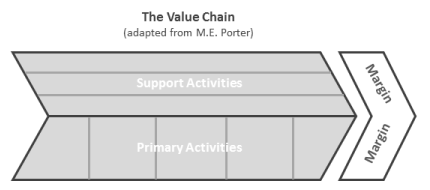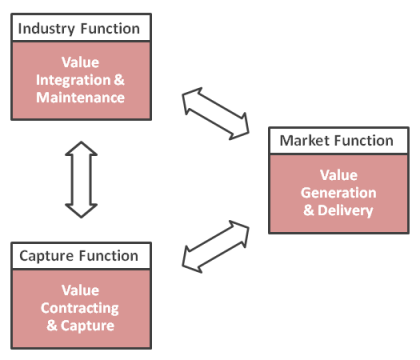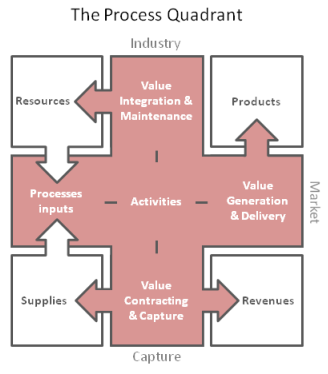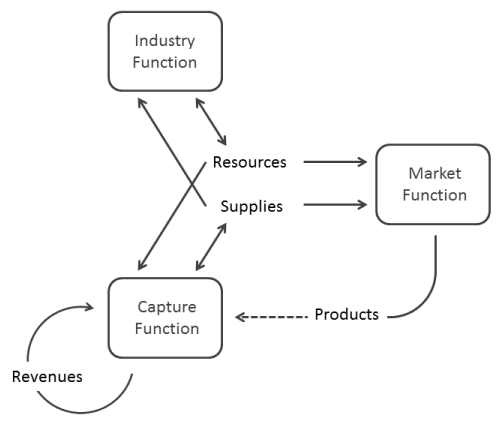The “Value Chain” is one the most famous frameworks in Strategy, and it’s been around for a long time now. We’ve been used to dividing the activities of businesses into two categories: “Primary activities” (Inbound Logistics, Operations, Outbound Logistics, Marketing & Sales and Service) and “Support activities” (Firm Infrastructure, HR Management, Technology and Procurement). The objective of those sets of activities is supposed to be the “Margin”.

But the business world has changed:
- What was thought mostly for industrial businesses is not relevant anymore for the variety of businesses we are now familiar with. Primary activities may not be relevant in the digital world.
- Performance is not measured in terms on margin anymore (notion that may not even exist in some digital-based businesses). The richness of business models brings new performance schemes (based on cashflow, WCR, M&A transactions etc.).
- The value of a company may consist mainly in specific resources that it is building (think of Uber), which is not reflected in the Value Chain.
- Businesses are much more interconnected than before: the view of a single linear process cannot always reflect reality.
- More and more business models rely on synergies between activities: they cannot be separated from one another. Although processes may be distinct, they can share activities (Facebook delivers a service to its user and gets data from them through the same operations).
The verdict is simple: the “Value Chain” is obsolete. It is not relevant for our business world anymore. There is a need for a new approach in which we classify processes, and that reflect the fundamental functions of any business.
In the Bm2 framework, we consider 3 “Business Functions”:
- The “Market Function”: providing products (goods & services) to the external world.
- The “Capture Function”: capturing value (revenues or supplies) through transactions.
- The “Industry Function”: building and maintaining resources.

Any process belongs to a Business Function. To stick to our example above, let’s consider the basic level of Facebook’s activity:
- “Market” processes: Facebook provides services to its users, and provides access to those users to advertisers.
- “Capture” processes: Facebook gets the attention of users as well as personal data, and it also captures part of the marketing budget of advertisers.
- “Industry” processes: Facebook builds and maintains user profile databases.
The 3 Business Functions make a coherent whole for any business. Balancing those Business Functions is one of the most important things when defining one’s Business Model. Activities, unlike with the Value Chain approach, can be shared between processes.
The “Process Quadrant” illustrates the way processes work for any business, and shows the 4 fundamental components of the managed value: Products, Revenues, Supplies and Resources.

As shown by the Process Quadrant:
- All Processes use Resources and Supplies as inputs
- The output of Market processes is Products (Goods & Services)
- The outputs of Capture processes are Revenues and Supplies
- The output of Industry processes is Resources
Another way to visualize the same concept is to consider Business Functions as independent Business Units that have their own inputs and outputs:

In a future post, I will show how that approach allows us to see the value-added of any business as the sum of 4 terms (and in that process, I will introduce the notion of “BM value-added”):
- The Market Function value-added
- The Capture Function value-added
- The Industry Function value-added
- The « BM value-added »